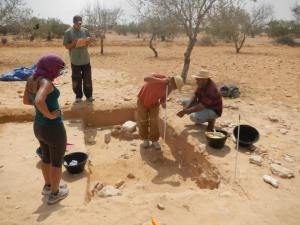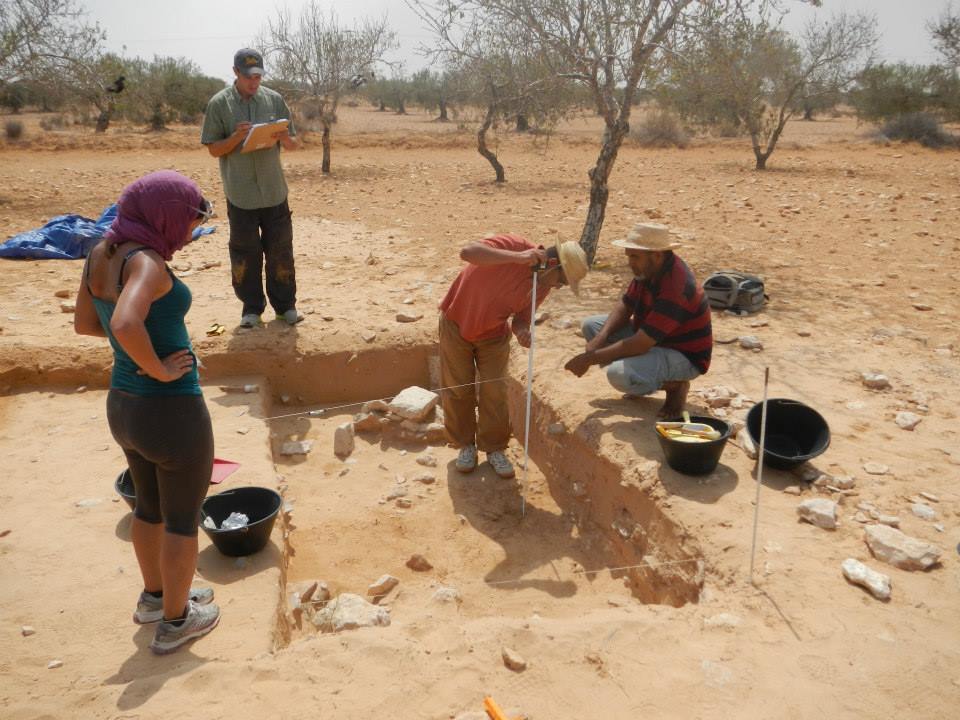
During the summer of 2015, a team of archaeologists and other specialists and students will be exploring a large mound that contains the remains of an ancient city that once commanded the highest point on a peninsula that juts out from the southern coast of Tunisia into the Mediterranean. Visible from the island of Djerba, which was anciently known as Calypso of the Lotus Eaters in Homer’s The Odyssey, the mound features the remains from a Roman bathhouse, ceramic kilns, evidence of metallurgy, and a Punic tomb.
Dr. Brett Kaufman of Brown University and colleagues from UCLA and the Institut National du Patrimoine (INP), Tunisia, have been conducting research at the site known as Zita, (“Olive City” in Punic), since 2013. Their first two seasons have uncovered promising signs that will help shed light on the human occupation phases and changes in a location that will see the first archaeological teams at the site since the Arab Spring.
“During our first two seasons in 2013 and 2014,” state the project leaders in their project summary, “extensive survey and selected excavations at the site demonstrated occupation levels beginning at least 500 BCE and lasting at least until 400 CE, mostly abandoned around 300 CE. A tophet was identified with numerous stelae and burials well preserved. Also, portions of a Roman forum were exposed, clearly demonstrating continued occupation covering the Punic and Roman cultural horizons.”*
_________________________________________
 Excavators taking and recording measurements in one of the areas at the Zita excavaton site. Credit: Zita Project on the Archaeology, Anthropology and Ethnography of Southern Tunisia
Excavators taking and recording measurements in one of the areas at the Zita excavaton site. Credit: Zita Project on the Archaeology, Anthropology and Ethnography of Southern Tunisia
_________________________________________
The team’s goals for 2015 include mapping the ancient city, including the surrounding coastal and agricultural areas; and targeted excavation of key areas and features of the site, such as the Roman forum, the Punic sacrificial precinct, and domestic and metallurgical areas. In addition, project leadership states that it intends to “document the socioeconomic, political, religious, and ecological realities of the local populations from prehistory to the post-Arab Spring.”*
Individuals interested in learning more about the site and how to participate may go to the project website. Participation at the Zita excavations is being coordinated by the Institute for Field Research.
________________________________________________________
* http://ifrglobal.org/images/2015/Syllabus/Syllabus-TunisiaZita2015-Final.pdf
________________________________________________________
Read about the most fascinating discoveries with a premium subscription to Popular Archaeology Magazine. Find out what Popular Archaeology Magazine is all about. AND MORE:
On the go? Get the smartphone version of Popular Archaeology as an app or as an ebook.
Just released!
The special new premium quality print edition of Popular Archaeology Magazine. A beautiful volume for the coffee table.
Travel and learn with Far Horizons.
____________________________________________
Popular Archaeology’s annual Discovery Edition eBook is a selection of the best stories published in Popular Archaeology Magazine in past issues, with an emphasis on some of the most significant, groundbreaking, or fascinating discoveries in the fields of archaeology and paleoanthropology and related fields. At least some of the articles have been updated or revised specifically for the Discovery edition. We can confidently say that there is no other single issue of an archaeology-related magazine, paper print or online, that contains as much major feature article content as this one. The latest issue, volume 2, has just been released. Go to the Discovery edition page for more information.








